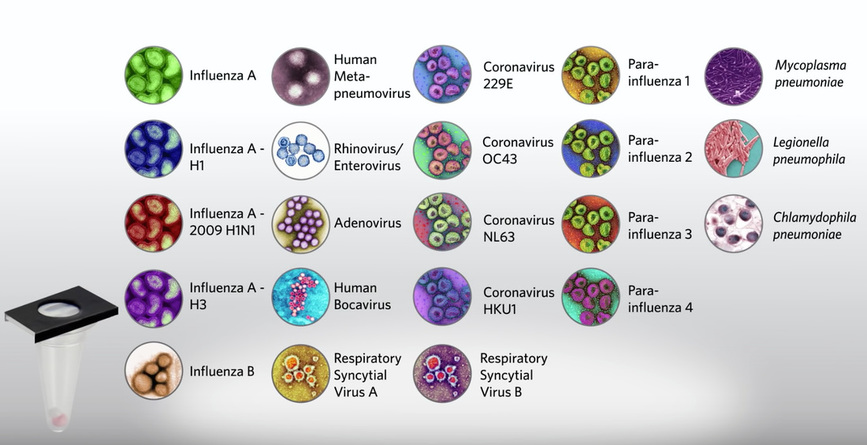WINTER 2020 - ALLERGY SEASON AND SEASONAL FLU TESTING!
EKR LAW COMPLIANT LABS www.healthlawadvisor.com/tag/ekra/
THE RESPIRATORY PATHOGEN PANEL (RPP TEST) FOR SINUS INFECTIONS AND INFLUENZA VIRUS
• REIMBURSED BY PRIVATE INSURANCE, MEDICARE AND MEDICAID IN MOST STATES!
• MARKET THIS EXCITING NEW LAB TEST AT NO COST TO THE PHYSICIAN
• BE THE FIRST TO INTRODUCE IT TO YOUR DOCTORS
(INTERNAL MEDICINE, FAMILY PRACTICE, PEDIATRICS, COMMUNITY HEALTH CENTERS, ETC)
• AGGRESSIVE EKRA COMPLIANT CONTRACTS FOR MARKETERS
• AVERAGE PHYSICIAN CAN PERFORM 5-10 TESTS A DAY OR MORE!
• SIMPLE NASAL SWAB TEST IS SENT BACK TO THE LAB FOR QUICK RESULTS IN ABOUT 24 HOURS
EKR LAW COMPLIANT LABS www.healthlawadvisor.com/tag/ekra/
THE RESPIRATORY PATHOGEN PANEL (RPP TEST) FOR SINUS INFECTIONS AND INFLUENZA VIRUS
• REIMBURSED BY PRIVATE INSURANCE, MEDICARE AND MEDICAID IN MOST STATES!
• MARKET THIS EXCITING NEW LAB TEST AT NO COST TO THE PHYSICIAN
• BE THE FIRST TO INTRODUCE IT TO YOUR DOCTORS
(INTERNAL MEDICINE, FAMILY PRACTICE, PEDIATRICS, COMMUNITY HEALTH CENTERS, ETC)
• AGGRESSIVE EKRA COMPLIANT CONTRACTS FOR MARKETERS
• AVERAGE PHYSICIAN CAN PERFORM 5-10 TESTS A DAY OR MORE!
• SIMPLE NASAL SWAB TEST IS SENT BACK TO THE LAB FOR QUICK RESULTS IN ABOUT 24 HOURS
Sinusitis is a common ailment: 16 percent of the U.S. population reports a diagnosis of sinusitis annually, accounting for 16 million office visits.1 Public interest in sinusitis is exemplified by a 1997 Internet search using Alta Vista, which found 4,960 matches. Furthermore, sinusitis is a costly disorder: about $2 billion is spent annually on medications to treat nasal and sinus problems.1 The National Ambulatory Medical Care Survey (NAMCS) lists sinusitis as the fifth most common diagnosis for which an antibiotic is prescribed.2
RESPIRATORY PATHOGEN PANEL
The RPP Test can pinpoint the Influenza virus and a number of other respiratory viruses and/or Pneumonia bacteria so your physician can treat it swiftly and accurately; therefore, it could reduce its severity and illness timeframe.
- Treatment protocols for bacterial respiratory pathogens are vastly different than those for viral pathogens so knowing the pathogen is key to proper and effective treatment.
- Molecular testing is far superior to the screen testing traditionally used in physicians’ offices.
- Screen testing requires a large input of virus/bacteria to work effectively, and even at that it is highly dependent on proper specimen collection and preparation.
- Screen tests are most effective when the patient has a high viral infection, accurate 89 to 100% of the time. But when the patients viral infection is low, or below the established sensitivity of the screen they fail 40-69% of the time. Even with good sampling, screen tests are fraught with false positives and false negatives.
- Screens don’t differenciate which species of flu the patient has. They may tell you that you are FluA positive, but not which type of flu they have. FluA H1, H1N1 2009 pandemic, or H3. Our test does.
|
|
|
Conventional culture and sensitivity testing (which is the standard) which can take a few days to a week to get results back on, and those are highly dependent on specimen collection and viability as they require good sampling from the patient and must have live organism. Molecular testing does not require live organism.
• 24 hour test turnaround time from when the test is received back at the lab, so treatment may begin quickly.
• The RPP panel employs PCR or (Polymerase Chain Reaction) to amplify specific nucleic acid sequences with the pathogens genetic make-up.
• Our limits of detection are far superior to conventional screen methods as we employ PCR technology, allowing us to amplify small quantities of nucleic acid into detectable levels.
• RPP test in a multiplex assay differentiating 19 strains of respiratory viruses and 3 bacterial species responsible for atypical, community acquires pneumonia’s and also Leginonaires Disease.
• Patient populations benefit from this test by precise detection and treatment protocols based on their infection state.
• Hospitals can utilize the tests multiplex capabilities to implement the proper quarantine procedures for patient infected with highly transmissible disease and provide them the treatment they require when time may be a considering factor to contain and cure infected individuals.
• Typical symptoms can be dry or productive cough, runny nose, lethargy, abnormal sputum, fever, body aches.
• They may be asymptomatic and growing the infection. Their bodies keep the disease in check, until It can’t anymore and they become sick.
• 24 hour test turnaround time from when the test is received back at the lab, so treatment may begin quickly.
• The RPP panel employs PCR or (Polymerase Chain Reaction) to amplify specific nucleic acid sequences with the pathogens genetic make-up.
• Our limits of detection are far superior to conventional screen methods as we employ PCR technology, allowing us to amplify small quantities of nucleic acid into detectable levels.
• RPP test in a multiplex assay differentiating 19 strains of respiratory viruses and 3 bacterial species responsible for atypical, community acquires pneumonia’s and also Leginonaires Disease.
• Patient populations benefit from this test by precise detection and treatment protocols based on their infection state.
• Hospitals can utilize the tests multiplex capabilities to implement the proper quarantine procedures for patient infected with highly transmissible disease and provide them the treatment they require when time may be a considering factor to contain and cure infected individuals.
• Typical symptoms can be dry or productive cough, runny nose, lethargy, abnormal sputum, fever, body aches.
• They may be asymptomatic and growing the infection. Their bodies keep the disease in check, until It can’t anymore and they become sick.


